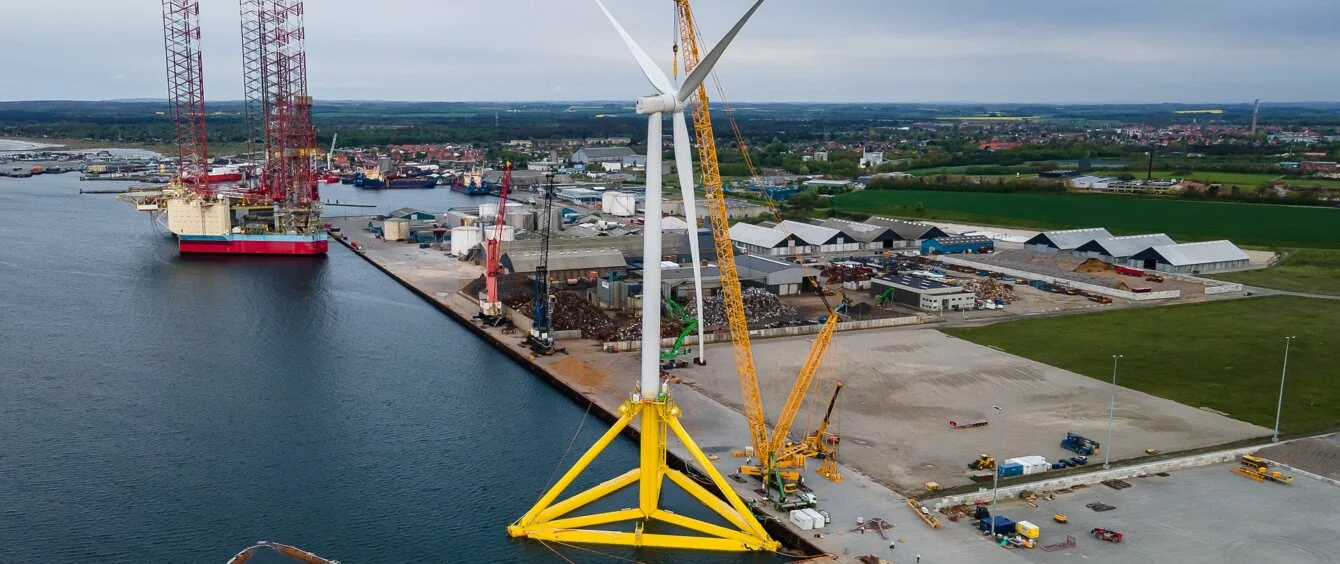Some ten kilometres off the western coast of Norway, for just over a year, RWE and its project partners Shell, TEPCO and Stiesdal Offshore Technologies have been trialling the first large-scale pilot for a fully industrially produced floating offshore wind turbine foundation.
Boasting an installed capacity of 3.6 megawatts (MW), the TetraSpar Demonstrator was built by the project partners in the summer of 2021 and anchored at a depth of 200 metres in the Marine Energy Test Centre (Metcentre) off the coast of Karmøy in Norway. The turbine started supplying electricity into the Norwegian transmission system in November 2021.
The objective of the project is to test the novel modular floating wind turbine foundation design while collecting data on system behaviour and performance in order to pave the way to market readiness.
The road to marketability
Floating wind, i.e. the method of generating electricity from buoyant wind turbines at sea, is increasingly gaining significance for the energy sector. Seabed fixed wind turbines can usually only be operated profitably in water no deeper than 70 metres.
Floating wind opens the door to taking advantage of steady wind speeds to produce green electricity at greater depths. This technique is useful above all in regions with steep coastlines.
TetraSpar - one year of full operation
The TetraSpar pilot project has been providing important information and data for a year. The operational experience garnered through the venture reveals that floating wind technology is already on course for market readiness.
Stuart Quinton-Tulloch, Senior Project Manager at RWE Renewables, says: “We still need to reduce the Levelised Cost of Electricity (LCOE). The early projects will be more expensive, but over the next ten years the cost of floating wind will reduce a lot as we build experience and knowledge. From the technical point of view we already know that floating wind is possible. Now we need to scale it up and learn how to build foundations using serial production techniques. This will really drive the cost down, and is the key advantage of the TetraSpar concept’s modular design.”
The TetraSpar concept
The tower carrying the wind turbine rests on a buoyant structure made of tubular steel, which constitutes the foundation. The TetraSpar concept was named to reflect the load-bearing structure that is shaped like a pyramid, known as a tetrahedron in geometry. It features a hanging keel, and the modular design is what makes the system unique. “It’s a bit like an IKEA kit,” Quinton-Tulloch explains.
Representatives talk about TetraSpar Offshore Floating Wind Turbine Foundation Demonstrator Project
“The prefabricated sections and pinned connections enable the production process to be highly automated and assembly to be rapidly implemented at the port,” the project manager declares.
He goes on to explain that a tug then tows the finished structure with the turbine pre-installed to its deployment site, where it is anchored to the seabed. The modular configuration enables industry-scale mass production, which significantly lowers both production and installation costs.
Refining floating technology
Floating wind continues to be developed in various projects around the world and the TetraSpar is only one of many concepts being proposed. “There are more than fifty floating foundation concepts currently being developed and each one has its own unique features that we need to assess,” states Quinton-Tulloch.
RWE, one of the world’s biggest offshore wind developers, is also working on another demonstrator, DemoSATH, which involves a concrete concept and is expected to be deployed off the north coast of Spain in 2023.
